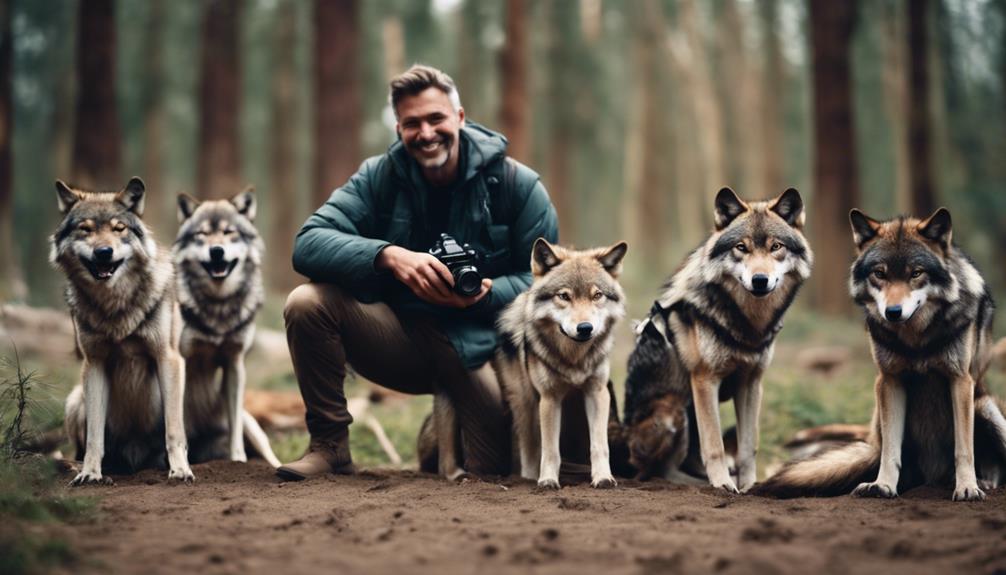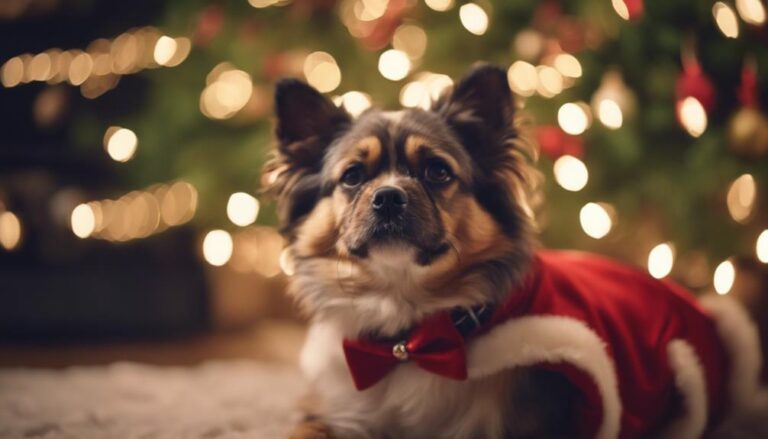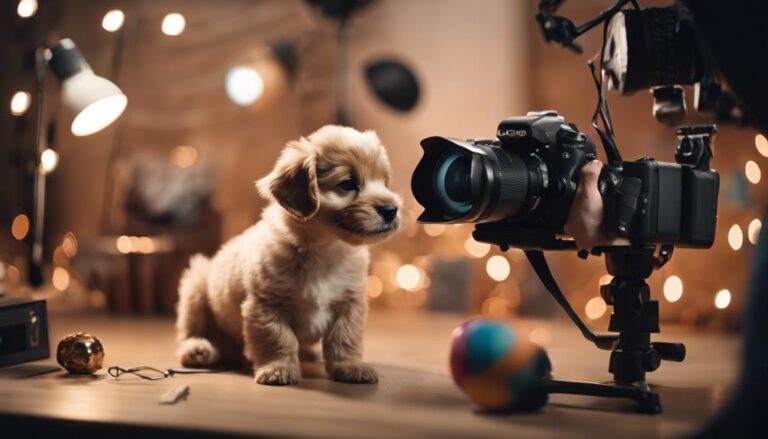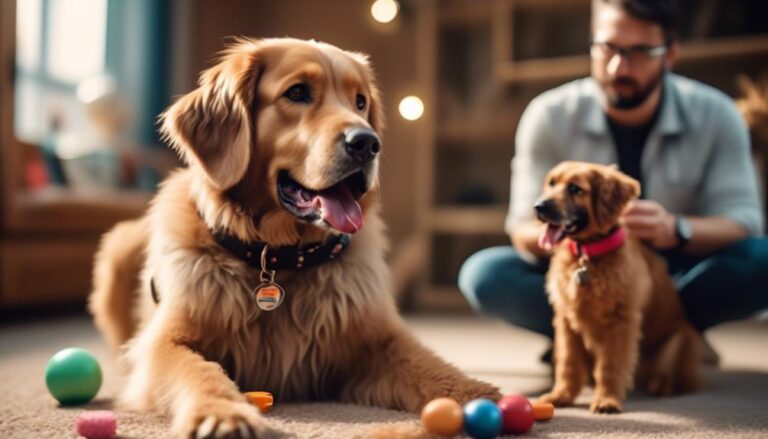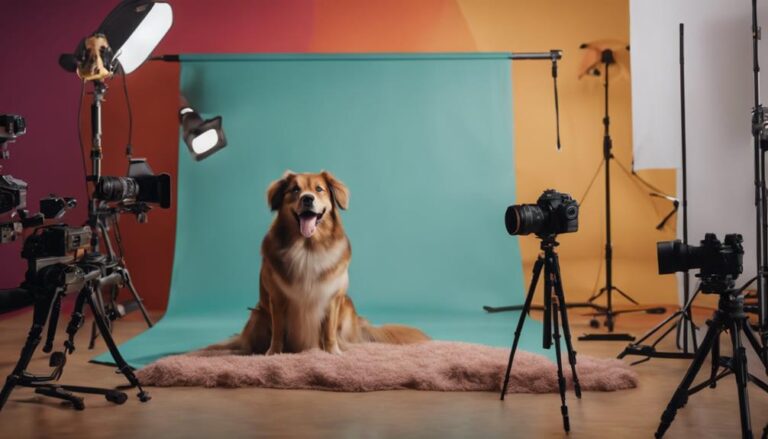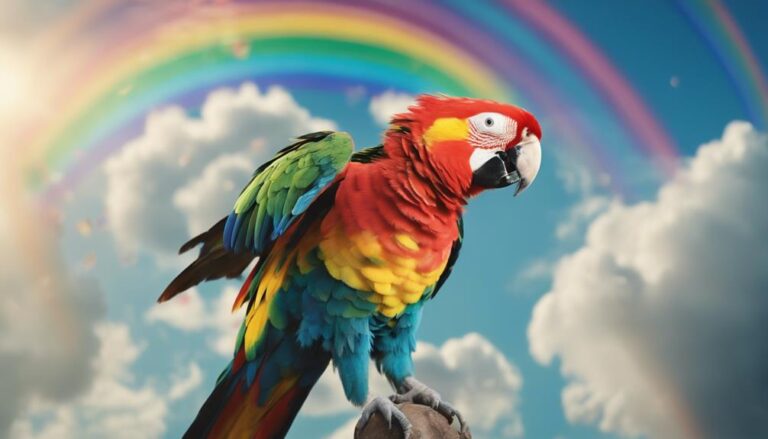Begin a rewarding career in pet photography at wildlife sanctuaries. Capture the animals' beauty, raise conservation awareness, and inspire others. Explore diverse species and environments, contributing to a noble cause. Equip yourself with the right gear for stunning shots and master lighting techniques. Foster trust with animals, enhancing your skills. Collaborate with sanctuaries, engage with social media, and attend networking events for growth. Develop a strong portfolio, focusing on creativity and variety. Ethical considerations and effective communication are key. Start your journey in pet photography and discover the endless possibilities that await you.
Benefits of Pet Photography
If you're considering a career in pet photography at wildlife sanctuaries, understanding the benefits of this niche can be essential for your success. Pet photography offers a unique opportunity to capture the beauty and personalities of animals in a controlled environment, making it easier to get that perfect shot. At wildlife sanctuaries, you have the advantage of working with a diverse range of animals, from exotic birds to big cats, providing you with a wide variety of subjects to photograph.
One of the key benefits of pet photography at wildlife sanctuaries is the chance to raise awareness for animal conservation efforts. Your photos can be used to educate the public about endangered species and the importance of protecting wildlife habitats. By showcasing the beauty of these animals through your photography, you can inspire others to take action and support conservation initiatives.
Additionally, working in a wildlife sanctuary setting allows you to observe and document animal behaviors up close. This unique access gives you the opportunity to capture moments and interactions that are not easily seen in the wild. These intimate shots can evoke powerful emotions in your audience, helping them connect with the animals on a deeper level.
Wildlife Sanctuary Environment
Exploring the wildlife sanctuary environment opens up a world of unique settings and interactions for pet photographers seeking to capture the essence of animal life in its natural habitat. Wildlife interactions within these sanctuaries provide a rich tapestry of behaviors and relationships that can be immortalized through the lens of your camera. From playful cubs learning to hunt to majestic birds soaring through the sky, every moment presents an opportunity to capture the beauty and rawness of the natural world.
The environmental impact of wildlife sanctuaries is significant. Conservation efforts within these protected areas are essential for safeguarding endangered species and preserving biodiversity. By documenting the flora and fauna within these habitats, pet photographers play an important role in raising awareness about the importance of habitat preservation. Your photographs can inspire others to support conservation initiatives and take action to protect our planet's precious ecosystems.
As you navigate the trails and observe the inhabitants of the sanctuary, remember that your images have the power to amplify the voices of these animals. Through your work, you can contribute to the greater cause of wildlife conservation and make a meaningful impact on the future of our planet. Embrace the privilege of capturing these moments and let your photography be a beacon of hope for a sustainable coexistence between humans and wildlife.
Essential Photography Equipment
When photographing wildlife in sanctuaries, you must carefully select camera lenses to capture animals from a safe distance. Consider using lighting techniques to enhance your images and bring out the details of your subjects. Additionally, tripod considerations are essential for achieving sharp and steady shots in various environmental conditions.
Camera Lens Selection
Selecting the right camera lens is vital for capturing stunning wildlife photography in wildlife sanctuaries. When choosing a lens, consider the focal length for zoom capabilities and the aperture settings for controlling depth of field. A telephoto lens with a longer focal length, such as 200mm or 300mm, is ideal for capturing animals from a distance. This allows you to zoom in on wildlife without disturbing them. Additionally, lenses with wider apertures, like f/2.8, are great for low-light conditions and creating beautiful background blur. Image stabilization is essential for reducing camera shake, especially when shooting handheld in unpredictable wildlife environments. Invest in a quality lens that suits your photography style and the wildlife you aim to capture.
Lighting Techniques
Using proper lighting techniques is essential for capturing high-quality wildlife photography in wildlife sanctuaries. To enhance your pet photography career, consider the following:
- Natural Lighting: Utilize the natural light available in wildlife sanctuaries to highlight the beauty of your subjects without the need for artificial lighting.
- Golden Hour: Make the most of the golden hour – the period shortly after sunrise or before sunset – to achieve warm, soft lighting that adds a magical touch to your photos.
- Backlighting: Experiment with backlighting techniques to create stunning silhouettes and add depth to your wildlife photography compositions. Mastering these lighting techniques will elevate your pet photography career in wildlife sanctuaries.
Tripod Considerations
Considering stability and flexibility, a sturdy tripod is an indispensable piece of equipment for capturing professional wildlife photography in wildlife sanctuaries. When selecting a tripod, look for features like adjustable legs, a durable build, and a ball head for easy adjustments. To guarantee stability, extend the thickest leg sections first and use a sandbag for extra support in windy conditions. When setting up your tripod, make sure the legs are secure on the ground and avoid extending the center column fully for added stability. Regular maintenance is key to prolonging your tripod's lifespan; clean the legs and joints, tighten any loose screws, and store it properly in a padded case. A well-maintained tripod will provide the stability needed for those perfect wildlife shots.
Building Trust With Animals
When approaching wild animals for photography, remember to establish a non-threatening presence and use calming body language. This will help the animals feel more comfortable around you and increase the chances of capturing authentic moments. By building trust with the wildlife, you can create stunning photographs that showcase their natural beauty.
Establishing Non-Threatening Presence
To establish trust with the animals in wildlife sanctuaries, maintain a calm and gentle demeanor while approaching them for photography sessions. Animal communication and wildlife observation are essential tools in understanding their behavior and gaining their trust. Here are three key strategies to help you establish a non-threatening presence:
- Respect their Space: Give the animals room to feel comfortable and safe around you.
- Observe Body Language: Pay attention to their signals and adjust your approach accordingly.
- Use Soft and Soothing Tones: Speak in a gentle voice to reassure the animals and create a calming atmosphere.
Using Calming Body Language
Maintain a relaxed posture and gentle movements to communicate a sense of peace and safety when interacting with animals in wildlife sanctuaries. By incorporating breathing exercises and mindfulness techniques, you can create a calm environment that fosters trust and connection with the animals. Visual storytelling and forming an emotional connection are essential elements in capturing authentic moments with the wildlife residents. Remember to breathe deeply and move slowly, allowing the animals to acclimate to your presence naturally. Your body language plays a significant role in building rapport with the animals, so be mindful of your movements and gestures. Establishing a peaceful atmosphere through calming body language is key to creating stunning photographs that showcase the true essence of wildlife in their sanctuary home.
Lighting Techniques in Sanctuaries
Using natural light effectively can greatly enhance the quality of wildlife photographs taken in sanctuaries. When capturing images of wildlife in these natural settings, it is crucial to take into account the lighting conditions in order to create stunning and impactful photos. Here are some tips to help you maximize lighting techniques in sanctuaries:
- Utilize natural lighting: Take advantage of the soft, warm light during the golden hours just after sunrise and before sunset. This kind of lighting can add a beautiful glow to your wildlife portraits, enhancing the colors and textures of the animals' fur or feathers.
- Experiment with artistic angles: Play around with different perspectives to see how light interacts with your subject. Try shooting from a low angle to create dramatic shadows or capture the animal's expressions in a unique way. Do not hesitate to get creative with your angles to make your photos stand out.
- Embrace creative shadows: Shadows can add depth and interest to your wildlife photographs. Use dappled light filtering through trees or foliage to create dynamic patterns and textures in your images. Embracing creative shadows can give your photos a sense of mystery and intrigue, drawing the viewer's eye to different aspects of the scene.
Composition and Framing Tips
Enhance the visual appeal of your wildlife sanctuary photographs by mastering composition and framing techniques. To capture compelling images, consider using creative angles and artistic perspectives. Experiment with different vantage points to add depth and interest to your shots. Instead of always shooting at eye level, try getting down low or finding a higher vantage point to create unique compositions that stand out.
Emphasizing emotion in your wildlife sanctuary photographs can elevate them from ordinary to extraordinary. Look for opportunities to capture storytelling shots that evoke a sense of connection with the animals and their environment. Focus on portraying the personality and emotions of the animals you encounter. Whether it's a tender moment between a mother and her offspring or a playful interaction between two species, aim to convey the essence of the sanctuary's inhabitants through your lens.
When framing your shots, pay attention to the elements within the scene to create visually pleasing compositions. Use leading lines, framing devices, and the rule of thirds to guide the viewer's eye towards the main subject. Remember that composition plays a vital role in how your audience perceives and interprets your photographs. By mastering composition and framing techniques, you can capture stunning images that engage viewers and showcase the beauty of wildlife sanctuaries.
Capturing Animal Behavior
To excel in capturing animal behavior, focus on observing natural habitat interactions, seizing candid moments, and documenting behavioral patterns. By immersing yourself in the wildlife sanctuary environment, you'll witness unique behaviors that showcase the essence of each animal. Pay attention to the subtle cues and movements that reveal the true nature of the creatures you photograph.
Natural Habitat Interactions
Capture the genuine essence of wildlife by observing and documenting their natural habitat interactions through pet photography. To truly showcase the beauty and behavior of animals in their natural environment, focus on the following:
- Behavioral Patterns: Observe how animals interact with each other, their surroundings, and potential threats.
- Environmental Adaptations: Document how animals adapt to the wildlife sanctuary environment, showcasing their survival skills.
- Feeding Rituals: Capture the moments when animals hunt, forage, or feed, revealing their instincts and strategies.
Candid Moments Captured
In the heart of the wildlife sanctuary, amidst the rustling leaves and echoing calls, animals reveal their true selves through candid moments captured by astute pet photographers. Pet photography in wildlife sanctuaries goes beyond just snapping pictures; it fosters an emotional connection between viewers and the animals, highlighting their individual personalities and behaviors. These candid shots not only showcase the beauty of wildlife but also emphasize the importance of conservation efforts. By capturing these authentic moments, pet photographers play an essential role in raising awareness about the sanctuary's inhabitants and the need to protect their natural habitats. The impact of these images extends far beyond aesthetics, inspiring viewers to engage in conservation practices and support wildlife sanctuaries worldwide.
Behavioral Patterns Documented
By observing and documenting behavioral patterns, you gain valuable insights into the intricate lives of wildlife within sanctuaries. Here are some key elements you can focus on when capturing animal behavior:
- Social Interactions: Documenting how animals interact with one another can provide a glimpse into their hierarchical structures and social bonds.
- Animal Expressions: Capturing the various expressions and body language of wildlife can reveal their emotions and communication methods.
- Unique Perspectives on Wildlife Movements: Observing and photographing the unique ways in which animals move within their habitats can offer a deeper understanding of their behavior and habits.
These aspects not only enrich your photography but also contribute to the conservation efforts of these amazing creatures.
Post-Processing and Editing
Enhance the visual impact of your wildlife sanctuary pet photography by mastering post-processing and editing techniques. Color correction and retouching are vital to make sure that the colors in your photos are true to life and vibrant. When working with animals in natural settings, it's essential to maintain the authenticity of the scene while improving the overall quality of the image. Use tools like Adobe Lightroom or Photoshop to adjust the exposure, contrast, and saturation of your photos to make them truly stand out.
In addition to basic color correction and retouching, image manipulation can elevate your wildlife sanctuary pet photography to the next level. Experiment with different filters and effects to create unique and alluring images that showcase the beauty of the animals and their surroundings. However, it's important to strike a balance between enhancing the image and maintaining its authenticity. Avoid over-editing your photos to the point where they no longer accurately represent the animals or the environment in which they live.
Marketing Your Services
To effectively promote your pet photography services in wildlife sanctuaries, utilize strategic marketing techniques that highlight your unique skills and passion for capturing animals in their natural habitats. Here are some key strategies to help you market your services effectively:
- Social Media Promotion: Leverage the power of social media platforms like Instagram, Facebook, and Twitter to showcase your stunning wildlife photography. Engage with your audience by sharing mesmerizing images, behind-the-scenes stories, and tips on pet photography. Use relevant hashtags to reach a wider audience and consider running targeted ads to attract potential clients.
- Networking Events: Attend local wildlife and photography events to network with other professionals in the industry. Establishing connections with fellow photographers, wildlife enthusiasts, and potential clients can lead to collaborations and referrals. Make sure to carry business cards and a portfolio of your work to leave a lasting impression.
- Collaborations and Referral Programs: Partner with wildlife sanctuaries, pet stores, or animal rescue organizations to offer your photography services. Collaborations can help you reach a broader audience and provide unique opportunities to photograph a variety of animals. Implement referral programs where satisfied clients can refer your services to others in exchange for discounts or special offers.
Working With Sanctuary Staff
Establishing effective communication and collaboration with sanctuary staff is essential for a successful pet photography career in wildlife sanctuaries. Team collaboration is key when working with sanctuary staff as they possess valuable knowledge about the animals and the sanctuary itself. By actively engaging with staff members, you can gain insights into animal behavior and improve your observation skills, which are vital for capturing the best shots of the animals.
Communication techniques play a significant role in fostering a positive working relationship with sanctuary staff. Clear and respectful communication is essential for coordinating photo sessions and understanding the staff's expectations. By actively listening to their suggestions and feedback, you can guarantee that your photography aligns with the sanctuary's goals and values.
Collaborating with sanctuary staff also provides an opportunity to learn from their expertise. They can offer valuable insights into the animals' habits, preferences, and personalities, allowing you to anticipate their behavior and capture more authentic photographs. By working together as a team, you can create a comfortable and safe environment for the animals during the photo sessions, resulting in stunning and ethically sound images.
Ethical Considerations in Photography
Consider the ethical implications of your photography practices to guarantee the well-being and dignity of the wildlife subjects in your images. When working in wildlife sanctuaries, it is essential to uphold high ethical standards to safeguard the welfare of the animals you are photographing. Here are some key considerations to keep in mind:
- Respectful Approach: Approach the animals with respect and consideration for their natural behavior. Avoid disturbing their habitat or causing unnecessary stress. Remember, you are a guest in their home, and it is vital to act accordingly.
- Ethical Boundaries: Set clear ethical boundaries for your photography. Avoid using baiting or other methods that could harm the animals or manipulate their behavior for a better shot. Your goal should be to capture their authentic selves in their natural environment.
- Wildlife Conservation: Your photography should aim to support wildlife conservation efforts. Use your images to raise awareness about the importance of preserving natural habitats and protecting endangered species. Be a voice for the voiceless through your lens.
Growing Your Portfolio
When expanding your portfolio as a pet photographer in wildlife sanctuaries, focus on capturing diverse species in their natural habitats to demonstrate the beauty and diversity of wildlife. To enrich your collection, consider incorporating innovative angles and unique perspectives into your shots. Experiment with different camera angles to add depth and visual interest to your photos. Instead of always shooting at eye level, try getting down low or shooting from a higher vantage point to offer a fresh view of your animal subjects.
Another way to diversify your portfolio is by focusing on the smaller details within the wildlife sanctuaries. Zoom in on intricate patterns, textures, or features that are distinctive to each species. These close-up shots can add a dynamic element to your collection and highlight the individuality of each animal. Additionally, don't be afraid to play with lighting and shadows to create dramatic effects in your photos.
Remember that a successful pet photography portfolio in wildlife sanctuaries is not just about quantity but also about the quality and diversity of your images. By incorporating innovative angles and unique perspectives, you can showcase the beauty of wildlife in an engaging and compelling way, attracting potential clients and furthering your career in pet photography.
Frequently Asked Questions
How Can Pet Photographers Ensure the Safety of Both the Animals and Themselves in a Wildlife Sanctuary Environment?
When working in a wildlife sanctuary, pet photographers must prioritize safety for both the animals and themselves. Implement safety measures during animal interactions, respect wildlife habitat, and focus on photo composition that captures the beauty of the animals while maintaining a safe distance.
Are There Specific Photography Techniques That Should Be Avoided When Working With Wildlife in Sanctuaries?
When working with wildlife in sanctuaries, avoid distractions that could startle or stress the animals. Proper positioning is essential for capturing natural behavior without causing harm. Respect their space and movements to guarantee a successful photography session.
What Are Some Unique Challenges Pet Photographers May Face When Capturing Animal Behavior in a Sanctuary Setting?
When capturing animal behavior in a sanctuary setting, you might encounter challenges like respecting boundaries, ensuring animals' comfort, and maintaining ethical photography practices. It's crucial to be patient, observant, and respectful of their environment.
How Can Pet Photographers Effectively Communicate With Sanctuary Staff to Coordinate Photo Shoots and Ensure a Positive Experience for All Involved?
When coordinating photo shoots with sanctuary staff, remember to maintain open communication. Respect boundaries and prioritize animal welfare. Collaborate effectively with the team, ensuring a positive experience for all involved. Proper communication etiquette is key for successful partnerships.
Are There Any Specific Legal Considerations or Regulations That Pet Photographers Need to Be Aware of When Working in Wildlife Sanctuaries?
When working in wildlife sanctuaries, pet photographers must follow specific legal considerations and regulations. Understanding these guidelines guarantees compliance and respect for the sanctuary's rules. Always prioritize the well-being of the animals and environment.
Conclusion
To sum up, pursuing a career in pet photography at wildlife sanctuaries offers a unique opportunity to capture the beauty and essence of animals in their natural habitat. By building trust with the animals, utilizing essential equipment, and mastering lighting techniques, you can create stunning images that showcase their personalities. Marketing your services and working closely with sanctuary staff will help you grow your portfolio and make a positive impact in the world of wildlife conservation.

